The piano is an instrument capable of producing an impressive variety functions within music. Musicians use the piano’s keyboard to do everything from creating the frameworks of great symphonic works down to writing melodies for the choruses of simple pop songs. The piano also serves as a direct link to the world of music theory. Every serious musician should get at least somewhat familiar with the keyboard, and learning some piano fingering exercises is a great way to get there. Today we’re going to walk you through a few exercises that will help build muscle memory, strength, independence, and flexibility within your hands. To get the full benefit from these exercises, we recommend working with a keyboard that has weighted keys and a sustain pedal if you don’t have an acoustic piano. Also, you’ll need a metronome which you can either find for free through a quick internet search or through an app on your smartphone.
The Music Theory Connection
For these exercises, we’re going to show you how music theory ties into the way you’ll use your fingers to play the piano. Every musician should be familiar with the piano’s keyboard because it serves as a direct visual representation of what music theory looks like. The piano keys are perfect visual representations for the notes, scales, and intervals found in music, and what you learn here can inform the way you understand any pitched instrument. Effective piano fingering exercises deliver not only strength and flexibility to a player, but also a greater understanding of how music works in general.
Fundamentals
The best place to start introducing piano fingering exercises is major and minor scales. Scales are the step-by-step sequencing of the notes found in keys. Basic scales are a great way to teach your hands how to play independently, and they’re a gateway towards understanding basic chords and how to play within keys.
All major and minor scales are built using simple formulas that never change. These formulas all revolve around a series of half and whole steps, or intervals, found on the piano’s keyboard. Here’s the formula you’ll need to memorize for the building of major keys. We’ll start with the example of the C major scale:
W-W-H-W-W-W-H
C D E F G A B C
Starting with the note of C, if you follow the formula exactly you’ll get the notes in the scale you see above. Try building the major scale in a few different keys around the piano.
A similar formula can be used to build natural minor scales:
W-H-W-W-H-W-W
A B C D E F G A
Try building a few minor scales in different keys around the piano.
Now that we’ve covered how to build major and minor scales, let’s go over what fingers to use.
C, D, E, G and A Major and Natural Minor scales
If you’re familiar with the Circle of 5ths, these keys are the first five keys on the sharp side of the chart. Moving up from C to G to D to A and finally to E, we’ll add one sharp into the scale for every major scale we play. The fingers for these scales are all the same, making these major and minor scales great piano fingering exercises. Here are the fingering patterns you’ll need to know for both hands:
Fingerings (LH): 54321321
Fingerings (RH): 12312345
C Major:
Notes: C, D, E, F, G, A, B, C

C Minor:
Notes: C, D, Eb, F, G, Ab, Bb, C
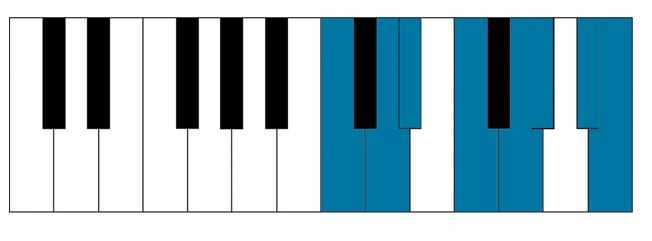
G Major:
Notes: G, A, B, C, D, E, F#, G
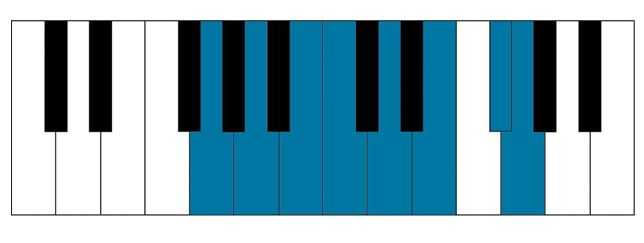
G Minor:
Notes: G, A, Bb, C, D, Eb, F, G

D Major:
Notes: D, E, F#, G, A, B, C#, D
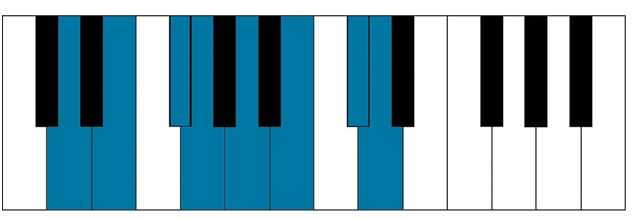
D Minor:
Notes: D, E, F, G, A, Bb, C, D
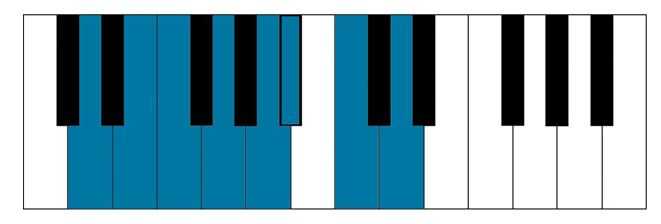
A Major:
Notes: A, B, C#, D, E, F#, G#, A
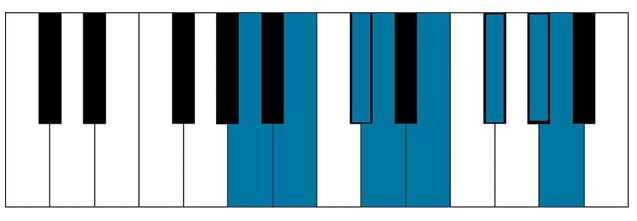
A Minor:
Notes: A, B, C, D, E, F, G, A
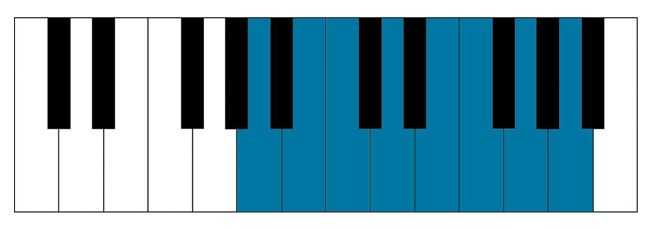
E Major:
Notes: E, F#, G#, A, B, C#, D#, E
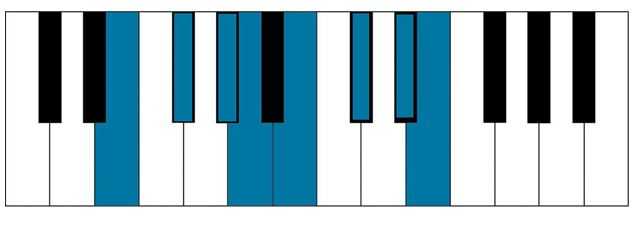
E Minor:
Notes: E, F#, G, A, B, C, D, E
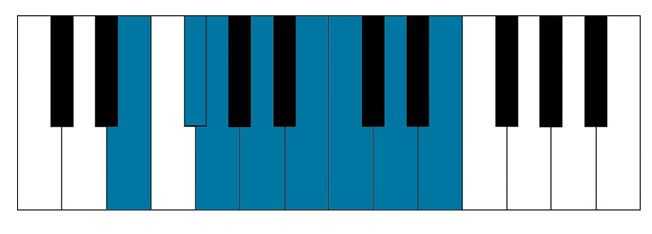
The middle, or 3, fingers should always line up, so if they don’t, stop and try again. We recommend playing extremely slow to start with until you begin to feel the more confident. As soon as you can, start playing with a metronome. Working with a metronome will help develop your internal rhythm in a powerful way.
Other Scales
Once you’ve mastered the fingerings for major and natural minor scales in C, G, D, A, and E, you’ll be ready to move on to tougher scales. As you can see, these scales don’t share the same fingering patterns and the middle fingers don’t always play together.
B Major:
Notes: B, C#, D#, E, F#, G#, A#, B
Fingerings (LH): 4, 3, 2, 1, 4, 3, 2, 1
Fingerings (RH): 1, 2, 3, 1, 2, 3, 4, 5
C#/Db Major:
Notes: Db, Eb, F, Gb, Ab, Bb, C, Db
Fingerings (LH): 3, 2, 1, 4, 3, 2, 1, 3
Fingerings (RH): 2, 3, 1, 2, 3, 4, 1, 2
D#/Eb Major:
Notes: Eb, F, G, Ab, Bb, C, D, Eb
Fingerings (LH): 3, 2, 1, 4, 3, 2, 1, 3
Fingerings (RH): 3, 1, 2, 3, 4, 1, 2, 3
F#/Gb Major:
Notes: F#, G#, A#, B, C#, D#, F, F#
Fingerings (LH): 4, 3, 2, 1, 3, 2, 1, 4
Fingerings (RH): 2, 3, 4, 1, 2, 3, 1, 2
G#/Ab Major:
Notes: Ab, Bb, C, Db, Eb, F, G, Ab
Fingerings (LH): 3, 2, 1, 4, 3, 2, 1, 3
Fingerings (RH): 3, 4, 1, 2, 3, 1, 2, 3
A#/Bb Major:
Notes: Bb, C, D, Eb, F, G, A, Bb
Fingerings (LH): 3, 2, 1, 4, 3, 2, 1, 3
Fingerings (RH): 4, 1, 2, 3, 1, 2, 3, 4
A#/Bb Minor:
Notes: A#, C, C#, D#, F, F#, G#, A#
Fingerings (LH): 2, 1, 3, 2, 1, 4, 3, 2
Fingerings (RH): 2, 1, 2, 3, 1, 2, 3, 4
B Minor:
Notes: B, C#, D, E, F#, G, A, B
Fingerings (LH): 4, 3, 2, 1, 4, 3, 2, 1
Fingerings (RH): 1, 2, 3, 1, 2, 3, 4, 5
C#/Db Minor:
Notes: C#, D#, E, F#, G#, A, B, C#
Fingerings (LH): 3, 2, 1, 4, 3, 2, 1, 3
Fingerings (RH): 3, 4, 1, 2, 3, 1, 2, 3
D#/Eb Minor:
Notes: D#, F, F#, G#, A#, B, C#, D#
Fingerings (LH): 2, 1, 4, 3, 2, 1, 3, 2
Fingerings (RH): 3, 1, 2, 3, 4, 1, 2, 3
F Minor:
Notes: F, G, Ab, Bb, C, Db, Eb, F
Fingerings (LH): 5, 4, 3, 2, 1, 3, 2, 1
Fingerings (RH): 1, 2, 3, 4, 1, 2, 3, 4
F#/Gb Minor:
Notes: F#, G#, A, B, C#, D, E, F#
Fingerings (LH): 4, 3, 2, 1, 3, 2, 1, 4
Fingerings (RH): 2, 3, 1, 2, 3, 1, 2, 3
G#/Ab Minor:
Notes: G#, A#, B, C#, D#, E, F#, G#
Fingerings (LH): 3, 2, 1, 3, 2, 1, 3, 2
Fingerings (RH): 3, 4, 1, 2, 3, 1, 2, 3
Chords
Knowing how to construct major and minor scales is hugely important because basic chords found in key signatures are built on each scale degree. Chord-building can also double as powerful piano fingering exercises that can give pianists increased finger strength and music theory knowledge. Basic chords, or triads, are built off of three notes. Both hands will use the 1, 3 and 5 fingers to play basic chords.
There’s two ways we can think about building chords. The first way focuses on building chords in the context of keys. This means that we can build triads and move up and down in the context of a major and minor key using only the notes found in the scale. Using the key of G major for example, this means that the chords you’ll play are G-B-D, A-C-E, B-D-F#, C-E-G, D-F#-A, E-G-B and F#-A-C.
The other way we can think about building chords is by using simple formulas of intervals to construct the basic chords found in major and minor keys. Major and minor keys are built off of a series of major, minor, and diminished chords that never change.
Major Chords: Root + Major 3rd (4 half-steps) + Perfect 5th (7 half-steps)
Using C as an example, a major chord can be built by adding an E and G a major 3rd and perfect 5th above.
Minor Chords: Root + Minor 3rd (3 half-steps) + Perfect 5th (7 half-steps)
Minor chords exactly mirror their major counterparts other than the third of the chord, which is a half-step lower. A C minor chord is C-Eb-G.
Diminished Chords: Root + Minor 3rd (3 half-steps) + Tritone (6 half-steps)
Starting with a C, adding an Eb and Gb will result in a diminished chord.
We’re going to show you a way to turn your chord-building knowledge into some helpful piano fingering exercises, but first let’s talk about a way to think about how chords relate to each other within keys. You’ll want to rely on a combination of the two chord-building methods we discussed.
Roman Numeral Analysis
The order of major, minor, and diminished chords found within keys never changes, so we can assign each chord its own unique Roman numeral to help us identify its place within a key. All major keys contain the following sequence of major and minor chords. The smaller numerals represent minor chords while the larger ones represent major chords. Any chord with a small circle beside it represents a diminished chord.
Major Keys
I ii iii IV V vi vii°
C Major Chord
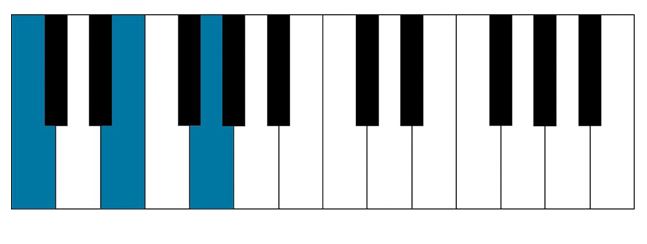
D Minor Chord
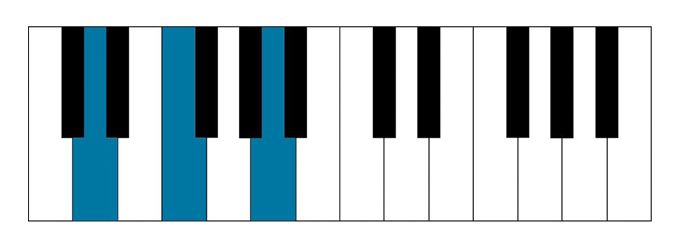
E Minor Chord
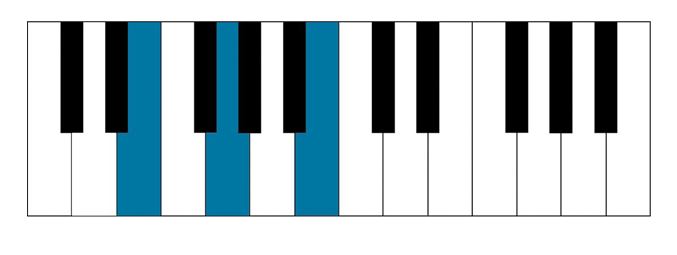
F Major Chord
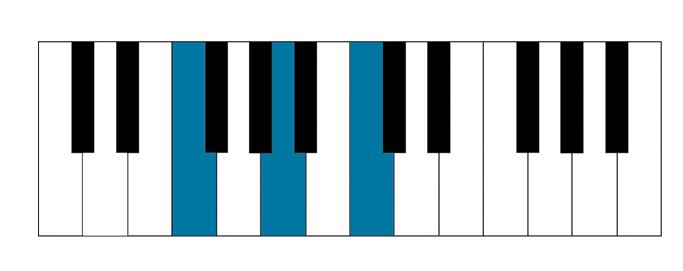
G Major Chord
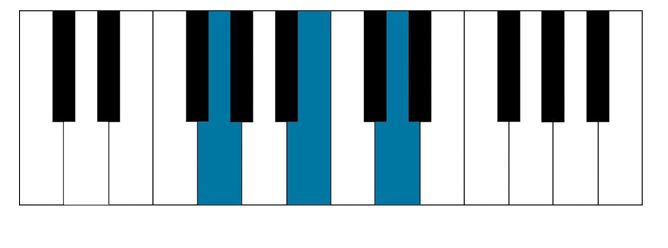
A Minor Chord
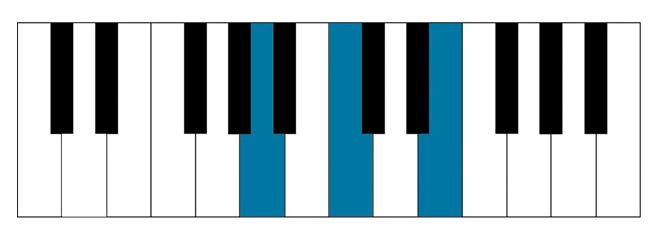
B Diminished Chord
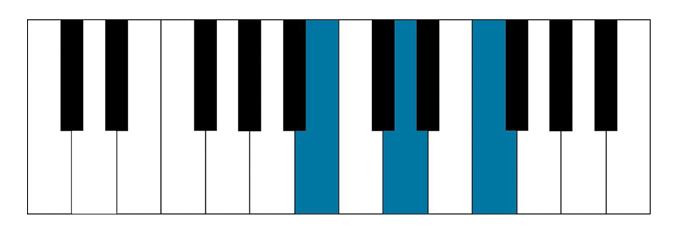
Minor Keys
i ii° III iv v VI VII
A Minor Chord

B Diminished Chord

C Major Chord

D Minor Chord

E Minor Chord

F Major Chord

G Major Chord

If you build triads on the scale degrees of major and minor chords, this is the way the chords are naturally organized.
Turn Your Chord Knowledge Into Piano Fingering Exercises
With the way we showed you above, you’ll now be able to build basic chords and scales in any key in music. That’s incredibly powerful knowledge that can inform your musicianship in new and meaningful ways. You can construct your own piano fingering exercises that put your chord knowledge into practice.
For example, starting from middle C you can create a finger exercise by arpeggiating the chords found in all the keys on both sides of the circle of 5ths. Or, starting from C, test your chord-building knowledge out and arpeggiate major, minor, and diminished chords chromatically step-by-step until you reach the C an octave above with both hands.
Hanon Exercises
Once you’ve mastered scales and chords, you’ll be ready for some advanced piano finger exercises. Pianists have turned to the Hanon book of piano exercises to help improve their playing for over 150 years. This book features 60 virtuosic exercises meticulously designed to increase strength, speed, flexibility, and power in a pianist.
Pianists who’ve been playing for months or decades will have tons to work with in this helpful book. Play these exercises slowly to the steady click of a metronome, and don’t move ahead until you’ve completed each exercise in order. This book has remained popular for so long because it’s basically a perfect book of piano fingering exercises.
If you find that working on piano fingering exercises alone isn’t giving you the results you’re looking for, we recommend finding an experienced teacher to work with. No book or Youtube video can replace the experience of learning directly from a patient and seasoned teacher.


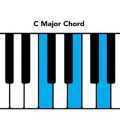



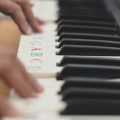

Wow! Nice one i have learnt how to play it thank you
I am a beginner, nearly 76, a missionary priest, eager to play piano when I retire in 2022. This is precisely the type of exercises I have been searching for. Oh! MUSIKA, you have put on the right track. Thank you so much.John Mi
These exercises have put me on the track for learning how to play piano. Thank you so much.